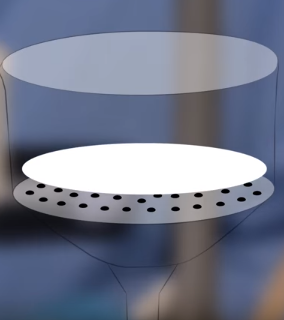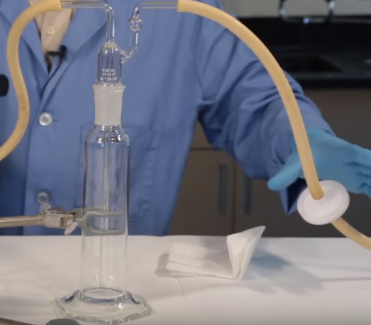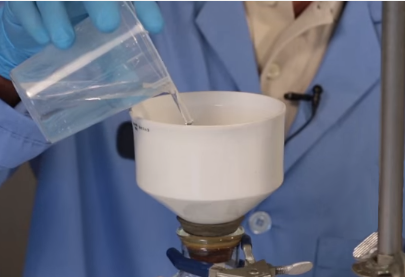Improve lab efficiency and lab productivity by minimizing costs and delays. Follow our simple tips and tricks for better vacuum filtration.
We’re always on the lookout for ways to speed up results, process more samples, and lower costs while preserving quality. These improvements help to maximize lab efficiency and productivity.
In this blog post, we talk through some simple tips and tricks for improving your vacuum filtration method when using a glass microfiber filter.
Although the protocol for vacuum filtration is routine for separating liquid samples from suspended solids, there are several efforts- and time-saving opportunities.
1. Ensure your filtration apparatus is set up correctly
Set up a trap, such as one using a Drechsel trap and tube. It is important to connect the tubing correctly for the type of pump that will be used (i.e., water jet pump, house vacuum line, or electric vacuum pump). Here is a set-up for a house vacuum, with the Buchner flask and funnel on the left, and the Drechsel trap and tubing on the right.
If you want to clarify how to set up a trap for your pump, check this short How-to video for vacuum filtration.
Secure your apparatus then carefully position your circle of glass microfiber filter into the Büchner funnel. Ensure the filter is of a suitable diameter to cover all the holes at the bottom of the funnel.
Glass microfiber filters are very fragile. Handle them with care at all times to avoid unnecessary damage and replacement.
2. Use a vacuum guard filter
Liquid in the vacuum line can lead to pump damage. Using an in-line filter device, such as Vacu-Guard, will protect against liquid breach.
In-line filter devices guard the vacuum pump systems from solvent vapor, gaseous contaminants, and aqueous aerosols. These devices help to prolong the lifetime of your equipment and keep replacement costs to a minimum.
3. Check the differential pressure
If you are using a standard laboratory jet pump, there is no need to adjust the differential pressure, because it will generally be in the correct range. However, if you are using a house vacuum or an electric vacuum pump, check and adjust the pressure to about 25 mm Hg.
Too much pressure for the environment risks damaging equipment; too little can reduce filtration speed and efficiency, respectively.
4. Use a glass rod to direct liquid into the funnel
Wetting the filter with a small amount of liquid will seat it in position. You can then proceed to pour the rest of the sample into the Büchner funnel. At this point, a glass rod can come in handy to direct the flow of liquid into the funnel and avoid spillages and loss of samples.
5. Disconnect vacuum tubing from Büchner flask first
After filtration is complete, disconnect the vacuum line from the Büchner flask before switching off the vacuum. This step will avoid the risk of drawing liquid back into the filter flask.
You might already be using some or all of these tips and tricks. If not, we hope they help you to optimize your vacuum filtration processes. Small improvements can lead to increased filtration efficiency.
Video: How-to set up and carry out vacuum filtration
Video: How to perform vacuum filtration with a glass microfiber filter
Try our Whatman Filter Selector App to find out if you are using the most appropriate filtration solution for your samples. To discuss any challenges you are facing, please contact Cytiva.



